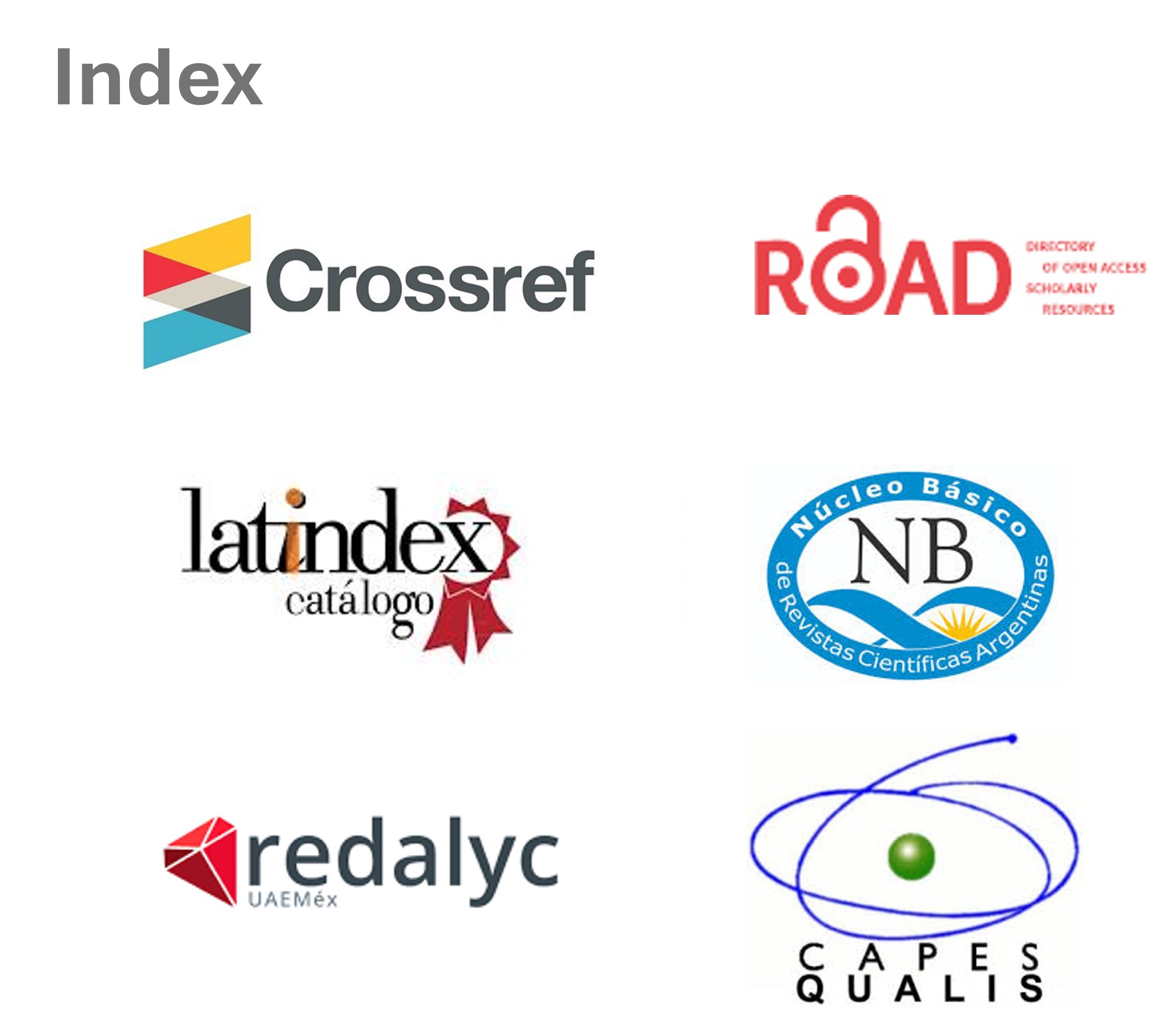La federalización de la CTI en Argentina y el diseño de políticas de inversiones públicas para la infraestructura del conocimiento
DOI:
https://doi.org/10.48160/18517072re53.168Keywords:
STI federalization, knowledge infrastructure, policy design, ArgentinaAbstract
In this article we propose a contribution to the analysis of Science, Technology and Innovation (STI) federalization in Argentina, addressing two vacant areas in the field of academic studies in STI. On the one hand, the subject of knowledge infrastructure (KI) and, on the other hand, the analysis of public policy design processes. In this vein, we carry out a literary review that complements contributions of systemic innovation economy approach with bibliography in political science known as "the new orientation of public policy design”. Under this framework, in first place we present conceptual notions of KI and its functions in National Innovation Systems, as well as the discussion on the role of the State and policy decisions regarding needed investments for its development and sustainability. In second place, we expose a renewed conceptual and analytical proposal for addressing policy design processes, and its contributions oriented to identify federalization levels of public resources invested. The empirical reference is the case study of KI public investment policy in Argentina between 2005 and 2015.
References
Aggio, C., D. Milesi, V. Verre y M. Lengyel (2020), Análisis del policy mix de fomento a la innovación en la Argentina: la importancia de las políticas sectoriales complementarias, Informe Técnico Nro. 2, Buenos Aires, CIECTI.
Albornoz, M. (1997), “La política científica y tecnológica en América Latina frente al desafío del pensamiento único”, Revista Redes. Revista de Estudios Sociales de la Ciencia y la Tecnología, 4, (10), pp. 95-115.
Aristimuño, F.J. y D. Aguiar (2015), “Construcción de las políticas de ciencia y tecnología en la Argentina (1989-1999)”, Revista Redes. Revista de Estudios Sociales de la Ciencia y la Tecnología, 21, (40), pp. 41-80.
Borrás, S. y C. Edquist (2013), “The choice of innovation policy instruments”, Technological Forecasting & Social Change, 80, pp. 1513–1522.
Borras, S. y J. Edler (2014), “Introduction: on governance, systems and change”, en Borrás, S. y J. Edler (eds.): The Governance of Socio-Technical Systems: explaining change, Londres, Editorial Edward Elgar, pp. 1-22.
Carro, A.C. y M. Lugones (2019), “Argentina y Brasil: sistemas de financiamiento, políticas tecnológicas y modelos institucionales”, Revista CTS, 42, (14), pp. 31-56.
Clark, N. (1985), The political economy of science and technology, London, UK, B. Blackwell.
Crespi, G. y G. Dutrénit (2013), “Introducción”, en Crespi, G. y G. Dutrénit (eds.): Políticas de ciencia, tecnología e innovación para el desarrollo: la experiencia latinoamericana, México, Foro Consultivo Científico y Tecnológico, LALICS, pp. 7-19.
Cunningham, P., J. Edler, K. Flanagan y P. Laredo (2013), Innovation policy mix and instrument interaction: a review, Informe Técnico, Nesta Working Paper Nro. 13/20, University of Manchester.
Dagnino, R. y H. Thomas (1999), “La Política Científica y Tecnológica en América Latina: nuevos escenarios y el papel de la comunidad de investigación”, Revista Redes. Revista de Estudios Sociales de la Ciencia y la Tecnología, 6, (13), pp. 49-74.
Del Bello, J.C. (2014), “Argentina: experiencias de transformación de la institucionalidad de apoyo a la innovación y al desarrollo tecnológico”, en: Rivas, G. y S. Rovira, S. (eds.), Nuevas Instituciones para la Innovación. Prácticas y experiencias en América Latina, Santiago de Chile, Colección Documentos de Proyectos Comisión Económica para América Latina y el Caribe (CEPAL), pp. 35-83.
Dodgson, M. (2017), “Innovation in firms”, Oxford Review of Economic Policy, 33, (1), pp. 85-100.
Edler, J. y J. Fagerberg (2017), “Innovation policy: what, why, and how”, Oxford Review of Economic Policy, 33, (1), pp. 2–23.
Edquist, C. (2001), “The Systems of Innovation Approach and Innovation Policy: An account of the state of the art”, Alborg, Denmark, DRUID Conference.
Edquist, C. (2011), “Design of innovation policy through diagnostic analysis: identification of systemic problems (or failures)”, Industrial and Corporate Change, 20, (6), pp. 1725–1753.
Evans, P. (1995), Embedded Autonomy: States and Industrial Transformation, Princeton, Princeton University Press.
Flanagan, K. y E. Uyarra (2016), “Four dangers in innovation policy studies – and how to avoid them”, Industry and Innovation, 23, (2), pp. 177-188.
Flanagan, K., E. Uyarra y M. Laranja (2011), “Reconceptualising the ‘policy mix’ for innovation”, Research Policy, 40, (5), pp. 702-713.
Freeman, C. (1982), Technological infrastructure and international competitiveness. Paper presented to the ad hoc group on Science, Technology and Competitiveness. Paris, Organization for Economic Cooperation and Development (OCDE).
Freeman, C. (1995), “The National Innovation System in historical perspective”, Cambridge Journal of Economics, 19, (1), pp. 41–60.
Freeman, C. (2004), “Technological Infrastructure and International Competitiveness”, Industrial and Corporate Change, 13, (3), pp. 541–569.
Galli, R y M. Teubal (1997), “Paradigmatic shifts in National Innovation Systems“, en Edquist, C. (ed.): Systems of Innovation. Technologies, Institutions and Organizations, London-New York, Routledge, pp.342-370.
Gutti, P., Y. Kababe y F. Pizzarulli (2019), “La infraestructura científico y tecnológica en el sistema nacional de innovación”, en Gutti, P. y C. Fernandez Bugna (eds.): En busca del desarrollo: planificación, financiamiento e infraestructuras en la Argentina, Buenos Aires, Universidad Nacional de Quilmes, pp. 72-93.
Herrera, A. (1971), “Los determinantes sociales de la política científica en América Latina. Política científica explícita y política científica implícita”, Revista Redes. Revista de Estudios Sociales de la Ciencia y la Tecnología, 2, (5), pp.117-131.
Hood, C. (2006), “The Tools of Government in the Information Age”, en Goodin, R, M. Moran y M. Rein: The Oxford Handbook of Public Policy, New York, Oxford University Press, pp. 469-481.
Howlett, M. (2011), Designing Public Policies. Principles and Instruments. New York, Ed. Routledge.
Howlett, M. y I. Mukherjee (2018), “The importance of policy design: effective processes, tools and outcomes”, en Howlett, M. y I. Mukherjee, I. (eds): Routledge Handbook of Policy Design, London - New York, Ed. Routledge, pp. 3-19.
Howlett, M. y J. Rayner (2018), “Coherence, congruence and consistency in policy mixes”, en Howlett, M. y I. Mukherjee, I. (eds): Routledge Handbook of Policy Design, London - New York, Ed. Routledge, pp. 389-403.
Howlett, M., I. Mukherjee, I. y J. Rayner (2018), “Understanding policy design over time: layering, stretching, patching and packaging”, en Howlett, M. y I. Mukherjee, I. (eds): Routledge Handbook of Policy Design, London - New York, Ed. Routledge, pp. 136-144.
Hurtado, D. (2010), La ciencia argentina. Un proyecto inconcluso: 1930-2000, Buenos Aires, Edhasa.
Kern, F. y M. Howlett, M. (2009), “Implementing transition management as policy reforms: A case study of the Dutch energy sector”, Policy Sciences, 42 (4), pp. 391-408.
Kivimaa, P. y F. Kern (2016), “Creative destruction or mere niche support? Innovation policy mixes for sustainability transitions”, Research Policy, 45, pp. 205–217.
Laranja, M., E. Uyarra y K. Flanagan (2008), “Policies for science, technology and innovation: Translating rationales into regional policies in a multi-level setting”, Research Policy, 37, (5), pp. 823-835.
Lascoumes, P. y P. Le Gales, (2007), “Introduction: Understanding public policy through its instruments – From the nature of instruments to the sociology of public policy instrumentation”, Governance, 20, pp. 1–21.
Lavarello, P. y M. Sarabia (2017), “La política industrial en la Argentina durante la década de 2000”, en Abeles, M., M. Cimoli, M y P. Lavarello (eds.) Manufactura y cambio estructural: aportes para pensar la política industrial en la Argentina, Santiago de Chile, Libros de la CEPAL, N° 149 (LC/PUB.2017/21-P), Comisión Económica para América Latina y el Caribe (CEPAL), pp. 157-200.
Lundvall, B. A. (1992), National systems of innovation. Towards a theory of innovation and interactive learning, Londres, Pinter Publishers.
Mazzucato, M. (2013), The Entrepreneurial State: Debunking the Public vs. Private Myth in Risk and Innovation, Londres, Anthem Press.
Mazzucato, M. (2019), “El Estado emprendedor: socializar riesgos y recompensas”, Propuestas para el Desarrollo, 3, (3), pp. 225-244.
Mazzucato, M. y G. Semieniuk (2017), “Public financing of innovation: new questions”, Oxford Review of Economic Policy, 33, (1), pp. 24–48.
Mercado, A. y R. Casas (2015), Mirada iberoamericana a las políticas de ciencia, tecnología e innovación: perspectivas comparada, Madrid, CLACSO, CYTED, pp. 11-35.
Miguez, P y J. Santarcángelo (2019), “El rol del Estado en las teorías del desarrollo económico”, en Lugones, G. y F. Britto (eds.): Ciencia y producción para el desarrollo. Actores y políticas de innovación en la Argentina, Buenos Aires, Ed. UMET – UNQ.
Milesi, D. (2013), Análisis del Alcance Territorial del Programa de Innovación Tecnológica II. Informe técnico, Buenos AIRES, CIECTI.
MINCyT (2012), Planes Nacionales de Ciencia, Tecnología e Innovación (Bicentenario / Argentina Innovadora), Buenos Aires, Ministerio de Ciencia, Tecnología e Innovación.
MINCyT, (2014), Plan de Obras para la Ciencia y la Tecnología), Buenos Aires, Ministerio de Ciencia, Tecnología e Innovación.
Morlacchi, P. y B. R. Martin (2009), “Emerging challenges for science, technology and innovation policy research: A reflexive overview”, Research Policy, 38, (4), pp. 571-582.
Nauwelaers, C., P. Boekholt, B. Mostert, P. Cunningham, K. Guy , R. Hofer y C. Rammer (2009), Policy Mixes for R&D in Europe, Informe Técnico, UNU-MERIT, University of Maastricht and United Nations University.
Niembro, A. (2017), “Hacia una primera tipología de los sistemas regionales de innovación en Argentina”, Journal of Regional Research, 38, pp. 117-149.
Niembro, A. (2020), “Las disparidades entre los sistemas regionales de innovación en Argentina durante el período 2003-2013”, Economía, Sociedad y Territorio, 19, (62), pp. 781-816.
Peters. G. (2018), Policy Problems and Policy Design, UK - Northampton, MA, USA, Edward Eldgar, Cheltenham.
Porta, F. y G. Lugones (2011), Investigación científica e innovación tecnológica en Argentina: impacto de los fondos de la Agencia Nacional de Promoción Científica y Tecnológica. Buenos Aires, Universidad Nacional de Quilmes.
Rivas, G. y S. Rovira (2014), Nuevas Instituciones para la Innovación. Prácticas y experiencias en América Latina, Santiago de Chile, Colección Documentos de Proyectos Comisión Económica para América Latina y el Caribe (CEPAL).
Rogge, K. (2018), “Designing Complex Policy Mixes: Elements, Processes and Characateristics”, en Howlett, M. y I. Mukherjee, I. (eds): Routledge Handbook of Policy Design, London - New York, Ed. Routledge.
Sarthou, N. F. (2018), “Los instrumentos de la Política en Ciencia, Tecnología e Innovación en la Argentina reciente”, Revista Trilogía Ciencia Tecnología Sociedad, 10, (18), pp. 97-116.
Schot, J. y E. Steinmueller (2018), “Three frames for innovation policy: R&D, systems of innovation and Transformative Change”, Research Policy, 47, pp. 1554-1567.
Smith, K. (1997), “Economic Infrastructures and Innovation Systems”. en: Edquist, C. (ed.) Systems of Innovation. Technologies, Institutions and Organizations, London-New York, Routledge, pp. 86106.
Smith, K. (2000), “Innovation as a systemic phenomenon: rethinking the role of policy”, Enterprise & Innovation Management Studies, 1, (1), pp.73-102.
Unzué, M. y S. Emiliozzi (2017), “Las políticas públicas de Ciencia y Tecnología en Argentina: un balance del período 2003-2015”, Revista Temas y Debates, 33, (21), pp. 13-33.
Vedung, E. (1998), “Policy instruments: typologies and theories”, en Bemelmans-Videc M. L., R.C. Rist, E. Vedung (eds.): Carrots, Sticks and Sermons. Policy Instruments and Their Evaluation, Londres, Transaction Publishers.
Published
Versions
- 2022-08-02 (2)
- 2022-08-02 (1)
How to Cite
Issue
Section
License
Copyright (c) 2022 Redes. Journal of Social Studies of Science and TechnologyThe documents published here are governed by the licensing criteria
Creative Commons Argentina.Atribución - No Comercial - Sin Obra Derivada 2.5 https://creativecommons.org/licenses/by-nc-nd/2.5/ar/













